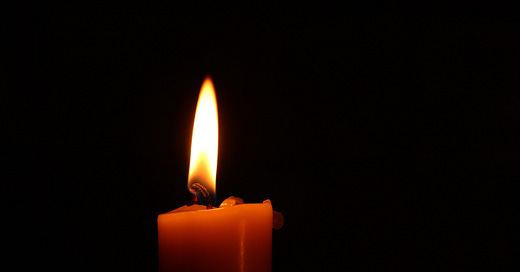This week marked the second Sunday of Advent. Each Sunday in Advent has a different theme, and this past Sunday observed peace. I’m jumping back a week, however, to talk about the first Sunday of Advent, the Sunday of hope.
The theme of hope for that first Sunday of Advent signifies the long-awaited and expected coming of a Savior, through prophecies of the coming King waiting to be fulfilled, through the longing ache of Israel. And the first Sunday of Advent had me thinking about another expectation and wait – Mary’s expectation of Jesus, her unexpected pregnancy.
The Annunciation – meaning “the announcement” – is the start of the Christmas story, and it documents Mary being visited by the angel Gabriel with news of the coming Christ, and her response. Mary is young, female, and no one particularly important in the context of Israel. She lives in Nazareth, engaged to a carpenter named Joseph, who is also decidedly unremarkable. When the angel appears to Mary and announces that she will conceive from the Lord and bear a child, Mary reacts with this:
“My soul glorifies the Lord
47 and my spirit rejoices in God my Savior,
48 for he has been mindful
of the humble state of his servant.
From now on all generations will call me blessed,
49 for the Mighty One has done great things for me—
holy is his name.
50 His mercy extends to those who fear him,
from generation to generation.
51 He has performed mighty deeds with his arm;
he has scattered those who are proud in their inmost thoughts.
52 He has brought down rulers from their thrones
but has lifted up the humble.
53 He has filled the hungry with good things
but has sent the rich away empty.
54 He has helped his servant Israel,
remembering to be merciful
55 to Abraham and his descendants forever,
just as he promised our ancestors.”
Mary may not be remarkable at the start of this story, but her response – titled The Magnificat – very much is. In her essay “The Annunciation,” Kathleen Norris compares Mary’s worshipful response with Zechariah’s disbelieving one. “How can this be?” Zechariah says, and the Lord shuts his mouth for the duration of Elizabeth’s pregnancy, “giving him a pregnancy of his own.”1 Zechariah responds with an immediate seeking of answers; Mary accepts the unexpected with a worshipful hope. Mary sees her own “humble state” as the perfect place to receive Christ’s coming in the way that God saw fit.
Now, in contemporary time in the Northern Hemisphere, the days are getting shorter and darker. I find myself getting routinely frustrated as golden hour, that signal of daylight’s death, emerges at 3:30pm. I stare out my office window while darkness chases the day away, long before I get ready to head home for the evening. As we approach the shortest day, I find myself increasingly hungry for light, internally wrestling with a work schedule that doesn’t allow me to savor the day’s fleeting presence.
This year in particular I’m feeling a dissonance between the season’s darkening and the aggressive optimism that the holiday season seems to maintain. In the pre-Christmas season, everything in American culture shifts into a frenzied consumerism. It’s a celebration, but a commodified one. I have a holiday shop of my artwork open currently, so I’m in the midst of the holiday rush myself, but I feel a conflict in my spirit about the hurry of it all. The holidays feel so full and fast-paced, bright and merry. Simultaneously we are wrapped in an ever-encroaching darkness, making the busyness of the season feel like a distraction.
When our life is absolutely filled to the brim at all times, what need for hope do we have?
In the spring, before Easter, the liturgical church observes a forty-day season called Lent. This season is generally observed in the church calendar as a time of corporate fasting, giving up a comfort to remember how Christ emptied himself. During Lent, we symbolically die to ourselves to remember Christ’s death for our sin, and that we will rise with Christ again.
I wonder if Lent and Advent might mirror each other in action – making room for an already-but-not-yet reality. As Mary made room for the coming of Jesus in her body, can we look to Advent as a preparation, a making-room for remembering Christ’s coming to us? Could we take this dark season as a time to cultivate a hope for his coming, a wait in the darkness for Light’s arrival?
And hope does not put us to shame, because God's love has been poured into our hearts through the Holy Spirit who has been given to us.
Romans 5:5
Some art to ponder:
To See
The Annunciation by Henry Ossawa Tanner (pictured above)
Mary Comforts Eve by Scott Erickson, after Sister Grace Remington
To Listen
Magnificat Reprise by Waterdeep
Mary & Joseph by Chris Renzema
How to Not Be Held Hostage by Hallmark on the Out of the Ordinary Podcast
To Read
Annunciation by Kathleen Norris
Kathleen Norris, “Annunciation,” Watch for the Light: Readings for Advent and Christmas, Plough Publishing.






